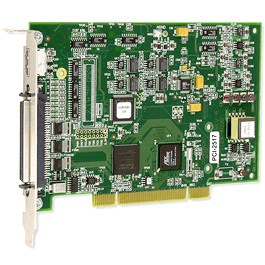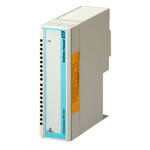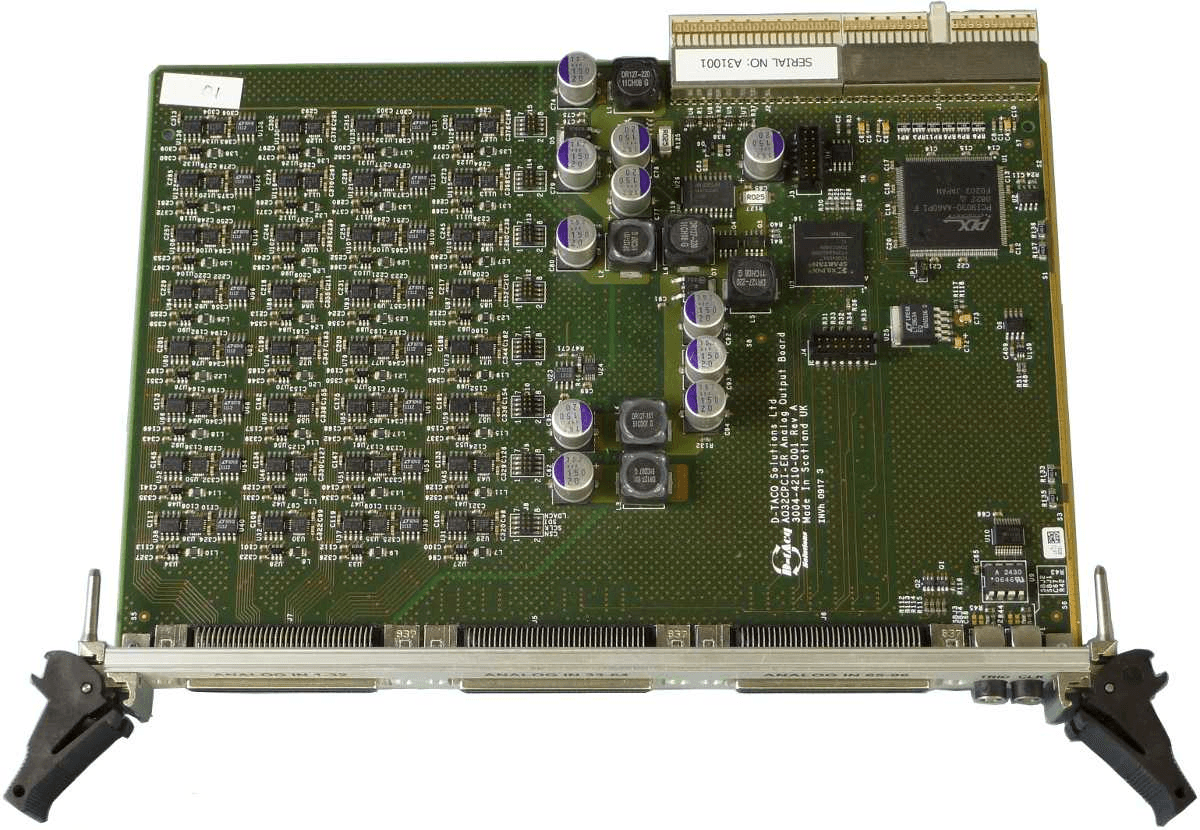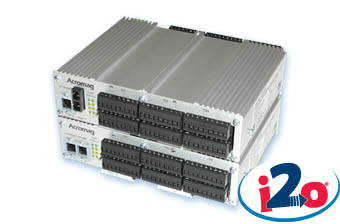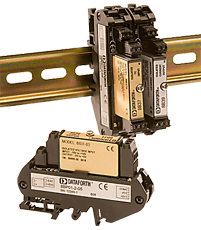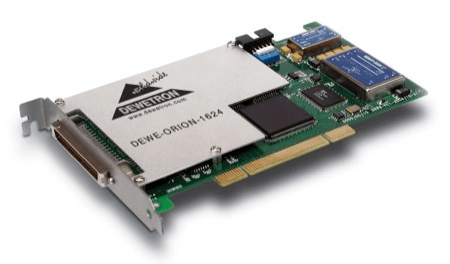Data Acquisition Systems and Instruments Information
Data acquisition systems and instruments are either the combination of a number of data acquisition components that make up a complete system or a self-contained instrument. They are used to collect, digitize, and process multiple sensor or signal inputs for the purpose of monitoring, analyzing, and/or controlling systems and processes. Data acquisition systems and instruments are configured in a wide variety of instrumentation and modular systems. Applications include manufacturing testing of all types of technical products, safety, environmental, certification, and research projects.
System Components
Data acquisition systems are comprised of front-end devices, a central processing unit, and back-end devices. Front end devices receive inputs and provide filtering, amplification, converting, and / or other processes required to make the signal suitable for data acquisition. A central processing unit receives and processes the digitized inputs. The back-end is a feedback loop comprised of conditioned outputs used to trigger alarms, provide control signals or transmit the acquired data.
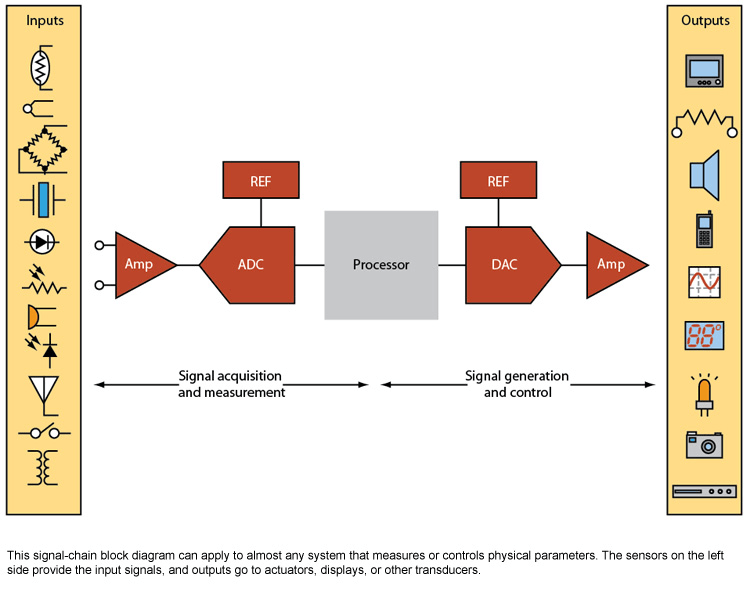 Signal-chain block diagram. Image Credit: electronic design
Signal-chain block diagram. Image Credit: electronic design
Components used in a data acquisition system include data acquisition computer boards, data input modules, data acquisition output modules, data acquisition I/O devices, signal conditioners, and signal converters.
|
Data acquisition computer boards are self-contained printed circuit boards (PCBs) that plug into backplanes and motherboards, or interface directly with computer buses. They receive multiple electrical or electronic inputs from devices such as sensors and translate analog data into a digital format that computers can process. |
Image Credit: Measurement Computing |
|
Data input modules receive signals from devices such as sensors and often provide voltage and current excitation along with signal conditioning. They are a front end device that interfaces with computer boards, systems, instruments, or recorders. |
Image Credit: Endress+Hauser, Inc. |
|
Dat a output modules transfer amplified, conditioned, or digitized signals to processing systems or devices. They are a backend device and the signal is a conditioned output from a computer board, system, instrument, or recorder. |
Image Credit: D-TACQ Solutions |
|
I/O modules and instruments have both input and output functionality. Digital or discrete I/O modules include on-off signals used in communication, user interface, or control. |
Image Credit: Acromag, Inc. |
|
Signal conditioning is a set of operations performed on a signal that makes it suitable for interfacing with other devices or systems. Signal conditioners are the actual devices that perform this operation. These devices have an input and an output. Normally the input is a sensor that measures a variable, not necessarily and electrical signal. |
Image Credit: Dataforth Corporation |
|
A signal is an electric current or electromagnetic field used to convey data from one place to another. Signal converters are electronic devices that receive one type of signal and output another type of signal. They can be found in many industrial and commercial applications. |
Image Credit: DEWETRON, Inc. |
Device Function
The function of the device is to monitor, analyze or control systems and processes.
Monitor
Data acquisition systems and instruments used to monitor processes and systems have the ability to record data points over a timed interval. They are customized for a particular application and may require specific modules in order to accommodate the type or number of inputs used. They may be equipped with on-board memory, removable storage, or may interface with a computer, used to process, store, and visualize the data. They may also be equipped with a switched output used to trigger an alarm or activate a switch when a pre-set condition is met or exceeded.
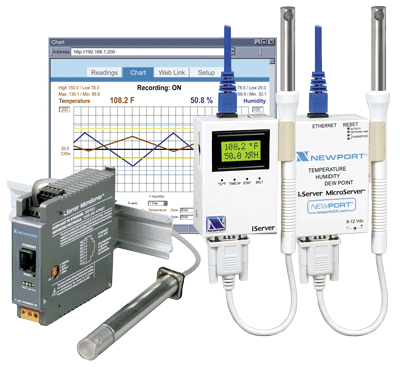
Monitoring with a virtual chart recorder. Image Credit: Newport Electronics, Inc.
Analyze
Data acquisition systems and instruments may be used for data analysis. Data points or real-time data can be fed into a system that reduces or compiles data in order to generate useful information. Fourier transforms are used to reduce a signal with respect to time into a series of sinusoidal terms. Application software is commonly used for signal processing and measurement functions.
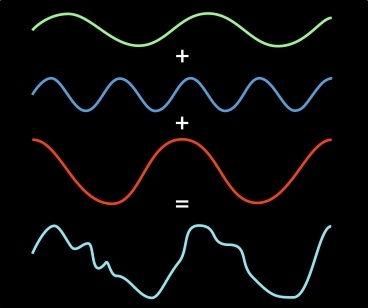
Fast fourier transforms (FFT). Image Credit: The Register
Control
Data acquisition systems and instruments can be used to control processes and systems. The central processing unit receives a feedback signal and produces a switched output or analog control signal that is used to control devices in a system or process. Common applications include motion control, industrial automation, web processing, and other industrial operations. Supervisory control and data acquisition (SCADA) systems are large-scale, industrial control and measurement systems that consist of a central host, one or more remote units, a communications network, and specialized software. More detailed information about SCADA is available in GlobalSpec's Supervisory Control and Data Acquisition Systems (SCADA) Selection Guide.
Video Credit: mmassaNY / CC BT-SA 4.0
Form Factor
Common form factors for data acquisition systems and instruments include circuit board, panel or chassis mount, modular bay or slot system, rack mount, DIN rail, and stand-alone.
- Printed circuit boards (PCBs) attach to enclosures or plug into computer backplanes.
- Panel or chassis mounts are used to install the device in cabinets, enclosures, or panels with bolts.
- Modular style units include stackable units that dock in bays, slots, or boxes.Rack units that fit inside a standard 19” telecommunications rack.
- Devices can be designed for mount on a Standard Deutsches Institute for Normung (DIN) rail, which is a German standard.
- Benchtop or freestanding devices often feature full casings or cabinets and integral interfaces.
Resources
DATAQ INSTRUMENTS - Waveform Analysis Using The Fourier Transform
United Electronic Industries - Data Acquisition Systems
National Instruments - Monitoring Applications with Data Acquisition Hardware
- Alabama
- Arizona
- California
- Colorado
- Connecticut
- Florida
- Georgia
- Illinois
- Indiana
- Kansas
- Massachusetts
- Maryland
- Michigan
- Minnesota
- Missouri
- North Carolina
- New Hampshire
- New Jersey
- New Mexico
- Nevada
- New York
- Ohio
- Oklahoma
- Oregon
- Pennsylvania
- Rhode Island
- South Carolina
- Tennessee
- Texas
- Utah
- Virginia
- Vermont
- Washington
- Wisconsin
- 4
- 6
- 8
- AC Current
- AC Voltage
- Accelerometer
- Aerospace / Military
- All Pass
- Analog (RC)
- Anti-aliasing Filter
- Application Software Included
- Band Pass
- Band Stop
- Bessel
- Butterworth
- CANbus
- Channel-to-Channel Isolation
- Charge
- Computer Programmable
- Counter / Tachometer
- Current Excitation Supply
- Current Output
- DC Current
- DC Voltage
- DIN Rail
- Datalogger / Recorder
- Delta Sigma (Modulator)
- Differential Channels
- Digital (FIR, IIR)
- Direct Backplane Interface
- Encoder
- Environmental
- Ethernet
- Ethernet
- Frequency
- Frequency Output
- Front Panel and Display
- General Lab and Industrial
- Gigabit Ethernet
- Hand-held / Remote Programmer
- High Pass
- IEEE 1394 (FireWire®)
- IEEE 1394 (FireWire®)
- Integral Amplifier
- Integral Filter
- Integrator
- Isolated Analog Voltage Input
- Isolated Analog Voltage Output
- Isolated Digital Input
- Isolated Digital Output
- Low Pass
- Marine
- Medical / Biomedical
- Modem
- Modular Bay / Slot System
- Networkable System
- User Interface: None
- PROFIBUS
- Panel / Chassis Mount
- Printed Circuit Board (PCB)
- Programmable Filter
- Programmable Gain
- RS232/422/485
- RTD
- Rack Mount
- Radio / Telemetry
- Relay / Switch
- Relay Output
- Seismic / Geotechnical
- Stand Alone / Benchtop
- Strain Gauge / Bridge
- TTL
- Thermistor
- Thermocouple
- Timer / Clock
- Timer / Counter Output
- Touch Screen
- USB
- Vehicular
- Voltage Excitation Supply
- Voltage Output
- Weather / Meteorology
- Web Enabled
- datalogger RS232
- automated data acquisition systems
- 24 bit data acquisition systems
- 64 channel data acquisition systems
- acoustic data acquisition systems
- acoustic emission data acquisition systems
- GPS based data acquisition systems
- microprocessor based data acquisition systems
- motorcycle data acquisition systems
- radar data acquisition systems
- real time data acquisition systems
- ruggedized data acquisition systems
- seismic data acquisition systems
- serial communication data acquisition systems
- simultaneous sampling data acquisition systems
- thermal data acquisition systems
- thermocouple data acquisition systems
- vibration data acquisition systems
